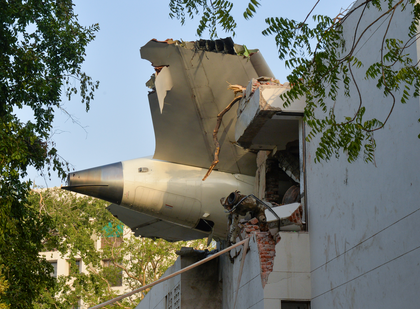US regulator FAA says Boeing’s fuel control switches are safe
By IANS | Updated: July 14, 2025 12:59 IST2025-07-14T12:53:48+5:302025-07-14T12:59:12+5:30
New Delhi, July 14 The USA’s Federal Aviation Administration has informed civil aviation authorities of other countries that ...

US regulator FAA says Boeing’s fuel control switches are safe
New Delhi, July 14 The USA’s Federal Aviation Administration has informed civil aviation authorities of other countries that fuel control switch designs, including the locking feature, installed in Boeing planes, including the Dreamliner involved in the Air India crash at Ahmedabad, are safe.
The US aviation safety regulator has stated that no airworthiness directive is deemed necessary for Boeing operators at this time, according to an NDTV Profit report.
Such directives are issued to mandate specific actions to be performed on aircraft or aircraft components to correct unsafe conditions that may affect flight safety,
The FAA's notice, addressed to foreign civil aviation authorities on July 11, followed a preliminary investigation report on the AI171 crash, involving a Boeing 787-8, in which over 275 people were killed, including crew, passengers and people on the ground.
One of the key findings of the Aircraft Accident Investigation Bureau’s (AAIB) preliminary report was that the twin engines of the ill-fated flight shut down seconds after take-off as fuel supply was cut off.
Switches controlling the flow of fuel to the aircraft's engines had been moved from 'RUN' to the 'CUT-OFF' position, which resulted in the engines switching off and the plane losing thrust. However, neither pilot acknowledged activating the switches.
The cockpit voice recording revealed one pilot asking the other: “Why did you cut off?” to which his colleague replied: “I didn’t.”
The AAIB report also mentions a FAA's 2018 bulletin that had warned of a potential malfunction of the fuel control switches, manufactured by US-based Honeywell, in a few Boeing models such as the 737s which also uses the same switches.
The bulletin recommended that carriers operating Boeing models, including the Dreamliner, inspect the locking mechanism of the fuel 'cut-off' switches — a step not taken by Air India, according to the AAIB report.
Air India informed investigators that it did not carry out suggested inspections as they were "advisory” in nature and not “mandatory".
The scrutiny of maintenance records revealed that the throttle control module was replaced by Air India on the AI171 Dreamliner twice — in 2019 and 2023 even though the reason for the replacement was not linked to the fuel control switch.
AAIB also noted that there has been no defect reported pertaining to the fuel control switch since 2023 on the aircraft.
The 2018 bulletin “was based on reports that the fuel control switches were installed with the locking feature disengaged”, the FAA said in a notice.
“Although the fuel control switch design, including the locking feature, is similar on various Boeing airplane models, the FAA does not consider this issue to be an unsafe condition that would warrant an Airworthiness Directive on any Boeing airplane models, including the Model 787."
When asked for a comment, the FAA said it did not have anything to add beyond the notification.
The AAIB has been investigating the crash in coordination with the US National Transportation Safety Board and the UK’s Air Accidents Investigation Branch, with the FAA providing technical support in accordance with International Civil Aviation Organisation’s protocol.
Though the cause of the crash has not been officially determined, experts have raised the question that the locking feature of the switches may have malfunctioned, which could have resulted in the fuel shutting off.
Disclaimer: This post has been auto-published from an agency feed without any modifications to the text and has not been reviewed by an editor
Open in app